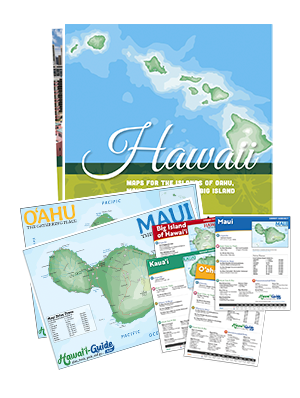It’s hard to imagine a more quintessential tourist fantasy than swimming with dolphins in the tropical waters of an island paradise. As of September 18th, 2021, in the archetypal island paradise of Hawaii, you can add “nostalgic,” “wistful,” or “sentimental” to the list of adjectives as well, because it’s going to be a thing of the past.
That is the date that US regulators officially banned it. In practice, the law works almost more like a restraining order. According to the National Oceanic and Atmospheric Administration, neither homo sapiens nor their various “vessels and objects” may come within 50 yards of spinner dolphins when they are within 2 miles of Hawaiian shores. Spinner dolphins are the most frequently encountered of any dolphin, whale, or porpoise in the Pacific Islands, and likely those which most closely resemble what you’re picturing in your imagination (or, perhaps, your memory).
— article continued below —
2024 Hawaii Visitor Guides
Visiting Hawaii soon? Be sure to grab a copy of one of our updated Hawaii Visitor Guides.
~ Trusted by Millions of Hawaii Visitors Annually ~
Clearly, this represents a dramatic ultimatum in the deteriorating relationship between humans and dolphins. What, exactly, did we do to make them so upset with us?
One reason may be that we’ve simply refused to leave them alone. A 2018 study estimated that dolphins off the Big Island’s Kona coast were spending 82% of their time in resting bays while in the close company of human beings. The interactions were so frequent the study additionally posited that dolphins were only granted 10 minutes on average between the departing of one batch of visitors to the arrival of the next.
Constant intrusion and interruption, especially at close proximity, isn’t just profoundly annoying and upsetting; it poses serious risks to the health of the species. Just like us, spinner dolphins use these critical resting periods to eat, sleep, copulate, and tend to their young. These are important things, and their incessant disruption is nothing short of an existential threat, particularly when it has been so widespread for so many years.
Another reason, more explicitly emphasized by the NOAA, is that despite long being very illegal, harassment is still an ongoing issue too. The claim is that previously legal activities like guided tours still inevitably result in the illegal harassment of dolphins. Whether that’s touching, chasing, tormenting, or any other horrendous misbehavior is not specified, but easy enough to imagine. In fact, the further discouragement of such harassment appears to be the express purpose of the ban. The Marine Mammal Protection Act, to which the new ban is an addendum, states the following:
“These regulatory measures are intended to prevent take of Hawaiian spinner dolphins from occurring in marine areas where viewing pressures are most prevalent...the purpose of this regulation is to identify and prohibit specific human activities that result in take (including harassment) of Hawaiian spinner dolphins…”
Presumably, if swimming within 50 yards of spinner dolphins is now banned under the MMPA, it means doing so has been “identified” as just such a specific human activity worth prohibiting. Much like with Oahu’s Haiku Stairs, which were ordered to be torn down by Honolulu mayor Rick Blangiardi just weeks earlier, it appears the last-resort decision of lawmakers is to stop misbehavior once and for all by simply erasing the opportunity to do so in the first place.
There’s little question this will be effective, but were such extreme measures really necessary?
Fans of dolphins should keep in mind that the “restraining order” really is only 50 yards. This, in theory at least, leaves the possibility for sight-seeing boat tours where these remarkable animals can be witnessed from afar. It could also be the case, although this is entirely speculative, that if the order is effective enough at restoring the health of the dolphin population, eventually options to swim amongst them might get cautiously and more restrictively reintroduced.
For now, and into the indefinite future it seems, visitors will have to settle for keeping their distance.


















